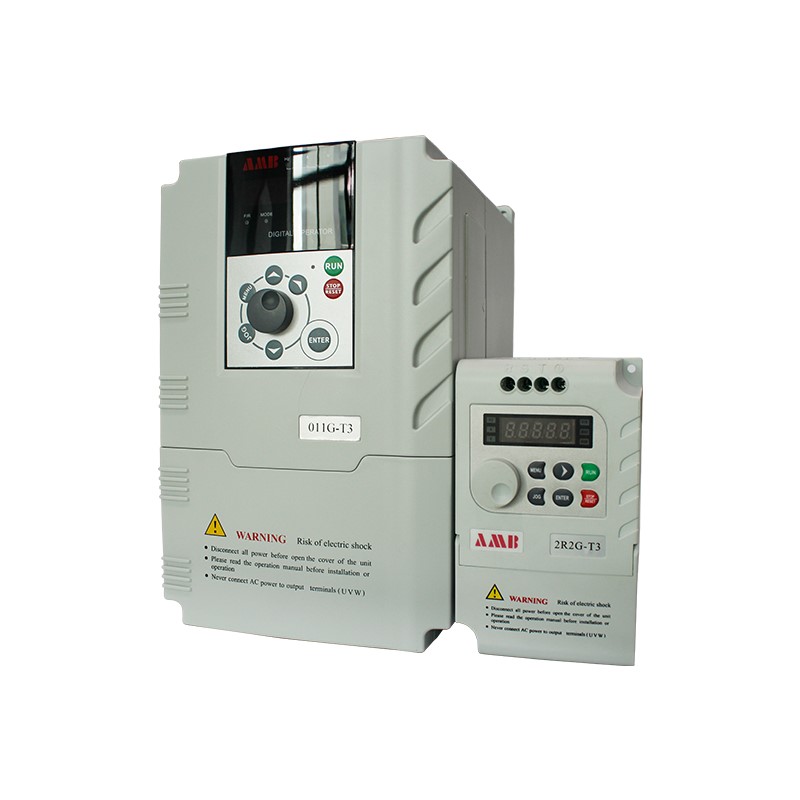
U/f constant control U/f control is to change the voltage of the motor power supply while changing the frequency of the motor power supply to keep the motor magnetic flux constant. In a wide range of speed regulation, the efficiency and power factor of the motor do not drop. Because it is the ratio of control voltage (Voltage) to frequency (Frequency), it is called U/f control. The main problem of constant U/f control is poor low-speed performance. When the speed is extremely low, the electromagnetic torque cannot overcome the large static friction force, and cannot properly adjust the torque compensation of the motor and adapt to the change of the load torque; the second is Can not accurately control the actual speed of the motor. Since the constant U/f inverter is speed open loop control, it can be seen from the mechanical characteristic diagram of the asynchronous motor that the set value is the stator frequency, which is the ideal no-load speed, and the actual speed of the motor is determined by the slip rate, so U/ The stability error existing in the constant control mode cannot be controlled, so the actual speed of the motor cannot be accurately controlled.
Slip frequency control The slip frequency is the difference frequency between the AC power frequency applied to the motor and the motor speed. According to the stable mathematical model of asynchronous motor, when the frequency is constant, the electromagnetic torque of the asynchronous motor is proportional to the slip rate, and the mechanical characteristic is a straight line.
Slip frequency control is to control torque and current by controlling the slip frequency. Slip frequency control needs to detect the speed of the motor to form a speed closed loop. The output of the speed regulator is the slip frequency, and then the sum of the motor speed and the slip frequency is used as the given frequency of the inverter. Compared with U/f control, its acceleration and deceleration characteristics and the ability to limit overcurrent are improved. In addition, it has a speed regulator, which uses speed feedback to form a closed-loop control, and the static error of the speed is small. However, to achieve steady-state control of the automatic control system, good dynamic performance cannot be achieved.
Vector control Vector control is also called field-oriented control. It was first proposed by F.Blasschke and others in West Germany in the early 1970s, and explained this principle by comparing DC motors and AC motors. This created a precedent for AC motors and equivalent DC motors. The method of vector control frequency conversion speed regulation is to change the stator AC currents Ia, Ib, Ic of the asynchronous motor in the three-phase coordinate system. Through the three-phase-two-phase transformation, it is equivalent to the alternating current Ia1 and Ib1 in the two-phase stationary coordinate system, and then through the rotation transformation according to the rotor magnetic field orientation, it is equivalent to the direct current Im1, It1 (Im1 is equivalent to the synchronous rotating coordinate system). It is the excitation current of the DC motor; It1 is equivalent to the armature current of the DC motor), and then imitate the control method of the DC motor to obtain the control value of the DC motor, and realize the control of the asynchronous motor through the corresponding coordinate inverse transformation. The emergence of vector control method makes asynchronous motor variable frequency speed regulation in an all-round superior position in the field of motor speed regulation. However, vector control technology requires correct estimation of motor parameters, and how to improve the accuracy of parameters is a topic of constant research.
Direct Torque Control In 1985, Professor DePenbrock from Ruhr University in Germany first proposed the theory of direct torque control. This technology largely solves the deficiencies of vector control. It does not indirectly control the rotation by controlling the current, flux, etc. But the torque is directly controlled as the controlled quantity. The advantage of torque control lies in the fact that torque control is to control the stator flux, essentially does not need speed information, the control is robust to all motor parameter changes except the stator resistance; the introduced stator flux observation The device can easily estimate the synchronous speed information, so it can easily realize the speed sensorless, this kind of control is called the speed sensorless direct torque control.

|
|

|
| The public, | Mobile station |
 0755-81719517
0755-81719517
|
|
 0755-81719530 0755-81719530 |
 amb@ambition.com.cn amb@ambition.com.cn |
 Floor 1, 5 and 6, building 7, lijincheng science and technology industrial park, gongye dong road, longhua new district, shenzhen Floor 1, 5 and 6, building 7, lijincheng science and technology industrial park, gongye dong road, longhua new district, shenzhen |
|